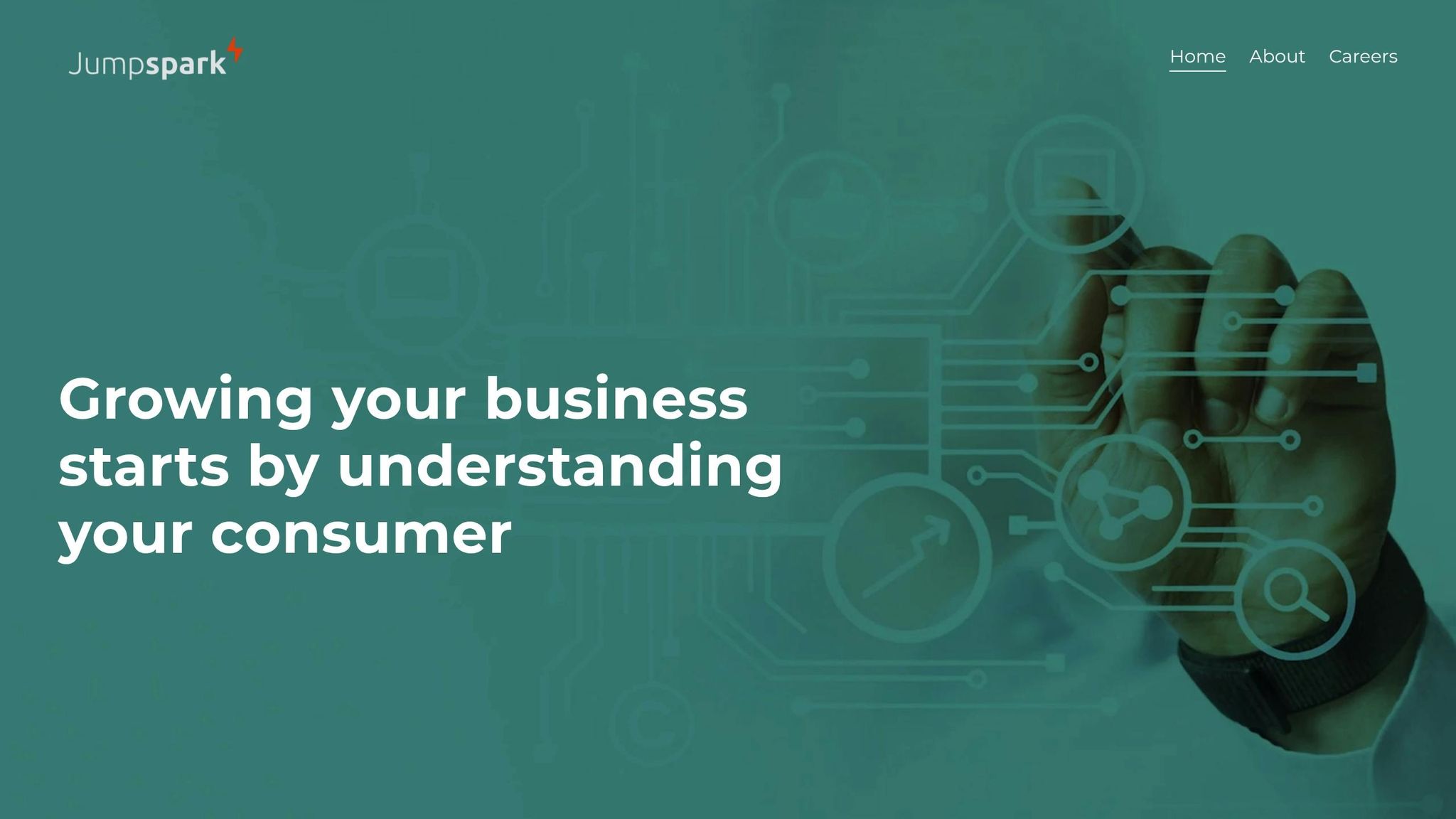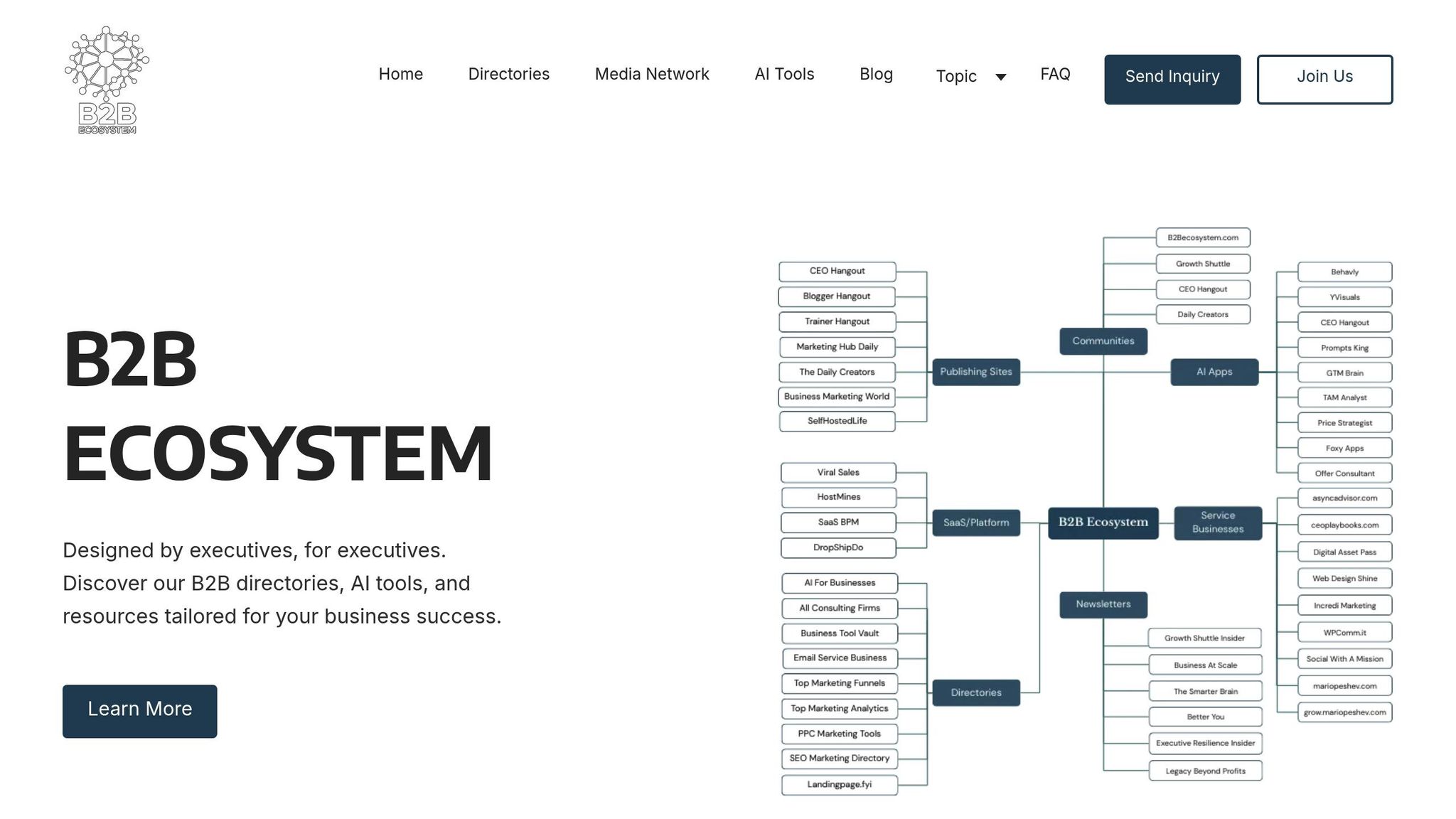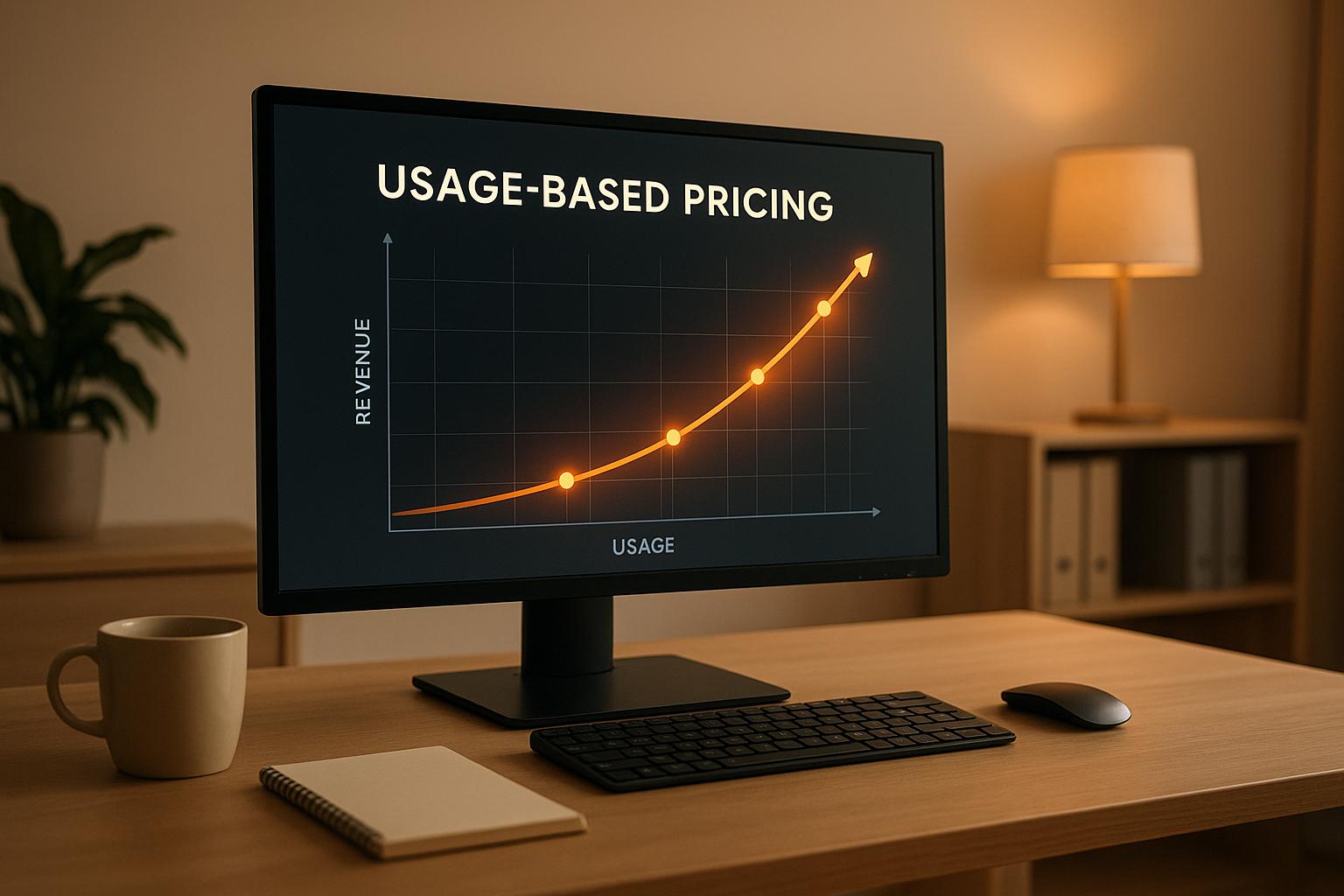Agile teams in 2025 are shifting focus to customer outcomes rather than internal metrics. This means prioritizing customer satisfaction, feature adoption, and real-world impact over traditional measures like velocity or story points. AI and automation are now central to gathering and analyzing customer data, enabling faster decision-making and more effective retrospectives.
Key trends reshaping Agile include:
- Customer-first focus: Teams now measure success by customer impact, not just task completion.
- Cross-department adoption: Agile is expanding beyond IT into marketing, sales, and customer service.
- AI-driven insights: Tools analyze customer behavior and feedback in real-time, speeding up iterations.
By embedding customer insights into retrospectives, organizations are improving satisfaction (93% higher than non-Agile teams) and employee engagement (73% higher). Success comes from clear feedback loops, outcome-based metrics, and breaking down silos across departments.
Agile in 2025 isn’t just about completing tasks - it’s about solving customer problems effectively.
#343: Agile Consumer Insights with Corey Lipman, Jumpspark

Adding Customer Insights to Agile Retrospectives
Agile's growing emphasis on customer outcomes means B2B teams need to bring customer insights into their retrospectives in a structured way. This approach shifts retrospectives from being purely internal reviews to sessions that prioritize customer-focused improvements, ultimately driving real business results.
Collecting and Analyzing Customer Data
For B2B teams, gathering customer insights requires methods tailored to their unique dynamics. Unlike B2C, where feedback often comes from individual consumers, B2B feedback involves multiple decision-makers and prioritizes long-term value over immediate satisfaction.
To gather meaningful insights:
- Structured surveys can provide quantitative data from business clients.
- Stakeholder interviews uncover pain points and unmet needs directly from key decision-makers.
- Product usage data tracks metrics like feature adoption, engagement patterns, and workflow completion rates, revealing where customers find value - or encounter challenges.
Customer advisory boards are another powerful tool. These boards offer a consistent feedback loop, especially useful in B2B contexts where close relationships with major clients are critical for retention and growth.
Once data is collected, analysis becomes crucial. Teams can segment insights by account type, industry, or user role to detect patterns and pain points. Techniques like root cause analysis help uncover why issues arise, while customer journey mapping highlights friction points across the experience. Even sentiment analysis of customer communications can provide insights into emotional responses that traditional metrics might miss.
This thorough approach to data collection and analysis ensures teams have actionable insights to bring into their retrospectives.
Sharing Insights with Agile Teams
For customer insights to truly impact Agile retrospectives, they need to be shared effectively. Make these insights a standard agenda item in every retrospective. Collaborative dashboards can centralize real-time customer data, visualize trends, and send alerts about critical feedback. Tools like Jira and Confluence can integrate these dashboards into daily workflows, ensuring customer insights are always accessible.
Breaking down silos is equally important. Cross-team sharing sessions allow marketing, sales, and development teams to exchange their customer experiences, creating a fuller picture of customer needs. Regularly involving these departments in retrospectives ensures that insights reach everyone who can act on them.
Real-time updates, such as dedicated Slack channels or internal newsletters, keep teams informed about customer experiences as they unfold. Highlighting real customer quotes or specific data points during retrospectives makes feedback tangible, turning abstract insights into actionable strategies.
Measuring Outcomes vs. Outputs
Once customer insights are integrated into workflows, teams need to shift their focus from measuring outputs to evaluating outcomes. This means moving beyond traditional Agile metrics like velocity or story points, which show how much work was done but not whether it delivered value to customers.
Key metrics to track include:
- Customer retention rates and Net Promoter Score (NPS), which reflect customer satisfaction and loyalty.
- Feature adoption rates, showing how well new features meet customer needs.
- Time-to-value, measuring how quickly customers achieve their desired outcomes.
- Trends in customer support tickets, which indicate whether product improvements are reducing friction.
For B2B teams, it’s also essential to monitor metrics that resonate with business clients, such as reduced operational costs, improved efficiency, or increased revenue. These metrics directly influence renewal decisions and expansion opportunities.
Visualizing these outcome-focused metrics on team dashboards keeps customer impact front and center during retrospectives. When teams see how their work improves satisfaction and retention, they can prioritize tasks that deliver the most value. This approach transforms retrospectives into strategic discussions centered on creating meaningful outcomes for customers.
Adopting this mindset takes time. Teams accustomed to measuring productivity through story points or sprint completion rates will need to adjust to focusing on outcomes. But organizations that make this shift report stronger customer relationships and more fulfilling work for their teams.
Key Trends in Customer-Focused Agile Practices for 2025
B2B organizations are zeroing in on three major trends that place customer insights at the heart of their strategies. By leveraging structured customer data collection and analysis, Agile teams are turning these insights into tangible competitive advantages.
Return to Customer Value Focus
The Agile community is shifting back to its roots, prioritizing what truly matters: delivering meaningful value to customers. Teams are stepping away from rigid frameworks and ceremonial processes, opting instead for simplicity and direct customer impact.
Economic pressures and rapid technological advancements are driving this change. Successful organizations are moving beyond framework compliance, focusing instead on engaging with customers directly. Many now schedule at least one customer conversation per sprint and integrate these insights into every Agile ceremony.
Teams are also tailoring their Agile processes to include real-world customer interactions. Cross-functional members observe customers using their products and incorporate these observations into sprint planning and retrospectives. This creates a feedback loop that keeps customer needs front and center, ensuring daily practices align with real-world outcomes.
This customer-first approach is paying off. Companies embracing it report stronger product-market fit and improved customer loyalty. The mindset shift is clear: instead of asking, "Did we complete our tasks?" teams now ask, "Did we solve customer problems?"
Cross-Department Agile Adoption
Agile practices are no longer confined to IT. Departments like marketing, sales, operations, and customer service are adopting Agile methodologies to respond more effectively to customer feedback and align around shared goals.
95% of professionals recognize Agile's importance in 2025, with much of its growth coming from these non-technical areas. Marketing teams, for example, use Agile sprints to iterate on campaigns, while sales teams rely on retrospectives to refine their engagement strategies.
In 2025, a global financial services firm expanded Agile practices to its marketing and customer service teams. This led to a 22% boost in customer satisfaction scores and a 15% reduction in time-to-market for campaigns. Weekly cross-departmental retrospectives and AI-powered analytics played a key role in identifying and addressing customer pain points.
This broader adoption of Agile fosters better collaboration. When marketing understands development constraints and sales teams share direct customer feedback with product teams, organizations can respond to market changes faster. The result? Better alignment, quicker delivery of value, and happier customers.
However, challenges remain. Resistance to change, limited Agile expertise outside IT, and difficulties in aligning diverse teams can slow progress. Organizations that succeed invest in targeted training, appoint Agile champions in every department, and adopt frameworks that support cross-functional collaboration. AI and automation are also helping bridge these gaps, enhancing customer insight and team coordination.
AI and Automation for Insights
Artificial intelligence and automation are revolutionizing how B2B teams gather, analyze, and act on customer insights. These tools enable real-time data analysis, uncovering actionable insights that would take human analysts far longer to identify.
AI assistants now analyze sprint data from platforms like Jira, Linear, and ClickUp, spotting patterns and suggesting retrospective formats tailored to team needs. By automating feedback collection and analysis, teams can quickly adapt to customer sentiment and usage trends.
A B2B SaaS provider implemented AI-driven automation for customer feedback analysis in Q2 2025. This enabled real-time sentiment tracking and faster product iterations, resulting in a 30% increase in feature adoption rates and a $1.8 million boost in annual recurring revenue.
The applications go beyond basic data processing. AI tools are now used for go-to-market strategy assessments, pricing optimization, target market analysis, and behavior analytics. Teams combine these insights with qualitative feedback for a deeper understanding, leading to faster feedback cycles and more precise improvements.
By providing real-time, objective insights, AI empowers teams to make informed decisions without relying on gut instincts or incomplete data. This ensures that customer intelligence is seamlessly integrated into every Agile cycle.
Together, these three trends are reshaping customer-focused Agile practices. Organizations embracing them report 93% higher customer satisfaction than non-Agile teams, along with 73% improved employee engagement. The takeaway is clear: putting customers at the center of Agile practices isn't just a smart move - it's essential for staying competitive in 2025.
sbb-itb-01010c0
Benefits and Challenges of Customer Insights in Agile
This section dives into the advantages and obstacles of weaving customer insights into Agile retrospectives, building on the integration methods discussed earlier.
Benefits vs. Challenges Comparison
Incorporating customer-focused practices into Agile workflows brings clear advantages. First and foremost, it helps teams align more closely with customer needs. This means prioritizing work that genuinely matters - features and fixes that add real value - rather than relying on assumptions. With clearer feedback loops, teams can iterate more efficiently, cutting down on wasted effort and focusing on what really moves the needle.
Another major plus? Boosted team motivation. When team members see how their work directly improves customer satisfaction, it’s a game-changer for engagement. Regular feedback from customers not only helps pinpoint and resolve issues faster but also leads to higher retention and satisfaction rates.
A shift toward outcome-based metrics is another step forward. Instead of focusing solely on traditional metrics like velocity or story points, teams start tracking things like customer satisfaction, feature adoption, and retention rates. This allows them to prioritize work that delivers measurable results.
However, these benefits come with challenges. For B2B organizations, integrating customer feedback during retrospectives can be tricky, especially when it involves synthesizing insights from multiple channels. Unlike simple data collection, retrospectives demand real-time analysis to inform team decisions and sprint planning .
Resistance to change is another hurdle. Some team members may see the integration of customer insights as extra work rather than a valuable addition, making adoption slower and less effective.
B2B organizations often face limited direct access to end users, which complicates feedback collection. Unlike B2C companies that can gather input directly from consumers, B2B teams usually rely on intermediaries like account managers or customer success teams. This can delay feedback and reduce its usefulness .
Finally, turning qualitative feedback into actionable tasks is no small feat. Customer comments often need careful interpretation and prioritization before they can be translated into user stories or technical requirements, which may require new skills.
| Benefits | Challenges | Mitigation |
|---|---|---|
| Improved customer alignment | Data integration complexity | Use AI-powered analytics platforms |
| Faster iteration cycles | Team resistance to change | Involve teams in process design |
| Enhanced team motivation | Limited direct access to end users | Schedule regular customer conversations |
| Outcome-based measurement | Difficulty translating insights | Provide training on customer-centricity |
Strategic approaches can help organizations tackle these challenges. For instance, involving team members in designing new processes reduces resistance by giving them a sense of ownership. Training on customer-centric practices can also help teams understand the broader value of these changes.
Regularly including customer feedback in retrospectives and showcasing its impact can drive cultural shifts and increase buy-in. Highlighting quick wins - like resolving issues surfaced through customer insights - builds momentum for broader adoption.
Sapience Analytics shared a case study where a company improved sprint outcomes across four retrospectives by addressing issues raised through both team reflections and customer feedback. By cutting down unnecessary meetings and clarifying user stories, the company achieved more balanced workloads and smoother sprint completions.
Tracking the return on investment (ROI) is key to demonstrating value. Metrics like customer satisfaction scores (CSAT, NPS), feature adoption rates, reductions in customer-reported issues, and faster time-to-market for new features can all highlight the impact of customer-centric retrospectives. Comparing these metrics before and after implementation provides tangible evidence of success.
Tools like AI-powered analytics platforms, retrospective management tools (e.g., Jira, Linear, ClickUp), and customer feedback aggregation platforms can centralize data and automate analysis. These tools make retrospectives more actionable by processing large datasets and identifying patterns that might otherwise go unnoticed .
The key to success? Start small. Focus on integrating one or two sources of customer insights before expanding. This gradual approach not only makes adoption smoother but also sets the foundation for leveraging specialized tools to streamline customer data integration into Agile practices.
Up next, we’ll explore the tools and resources that make integrating customer insights into Agile processes more efficient.
Tools and Resources for Customer-Focused Agile in B2B
Having the right tools can make all the difference when implementing customer-focused Agile practices in the B2B world. For teams to succeed, they need platforms that not only gather customer data but also turn it into actionable insights that directly impact sprint planning and retrospective discussions.
Platforms and Tools for Data Integration
Analytics and visualization tools like Tableau and Power BI are essential for bringing customer feedback and sprint metrics together in one place. These platforms create visual dashboards that help Agile teams make informed decisions during planning sessions.
Feedback tools such as Qualtrics, Medallia, SurveyMonkey, Intercom, and UserVoice are designed to capture real-time, structured input from customers. Many of these integrate seamlessly with project management platforms like Jira and Trello through APIs, enabling workflows where customer insights naturally feed into sprint planning and retrospectives.
AI tools, including ChatGPT and Claude, can quickly analyze sprint and customer data, highlighting recurring issues and major themes. For example, teams can export sprint data from platforms like Jira or ClickUp, and these AI tools can summarize patterns and insights automatically, saving time and improving focus.
The QuantAIfy suite from The B2B Ecosystem is tailored for B2B Agile needs. Tools like Behavly specialize in behavior analytics, offering insights into user engagement and customer interactions. Meanwhile, the Customer Retention & Engagement Maximizer focuses on improving satisfaction and retention, making it a valuable resource for retrospective discussions aimed at refining products and services.
These tools work together to streamline data integration, making retrospective sessions more productive and customer-focused.
Frameworks for Retrospectives
With integrated data in hand, Agile teams can adapt their retrospective practices to better include customer insights. Traditional frameworks like "Start-Stop-Continue" and "Sailboat" can be modified to incorporate customer feedback. For instance, in the "Start-Stop-Continue" method, teams can ask how specific customer requests or behaviors should guide each category. Similarly, the "Sailboat" framework can map out customer pain points as anchors that slow progress.
AI is also reshaping retrospective preparation. By analyzing sprint and customer data beforehand, teams can select the most effective formats for their discussions. For example, the "Lean Coffee" format is ideal for open conversations about customer feedback, while the "Sailboat" framework can help address issues affecting both team morale and customer satisfaction.
Techniques like anonymizing customer feedback and summarizing key themes keep discussions focused and actionable. Assigning clear action items tied to customer outcomes ensures accountability, while AI-generated summaries can help facilitators highlight the most pressing issues before the meeting even starts.
How The B2B Ecosystem Supports Agile Teams

The B2B Ecosystem offers comprehensive support for Agile transformations, providing tools, expert consulting, and practical resources to help teams succeed. Its QuantAIfy suite includes solutions like Behavly for behavior analytics and the Customer Retention & Engagement Maximizer, which are specifically designed to integrate customer insights into Agile workflows.
The ecosystem also features tools like the AI Process Optimizer, which helps teams refine outdated processes using customer feedback, and the GTM Brain, which incorporates customer insights into go-to-market strategies. These tools directly enhance retrospective sessions and overall Agile practices.
Beyond tools, The B2B Ecosystem offers consulting services to help teams overcome challenges like data silos, resistance to change, and a lack of actionable insights. These services guide teams in embedding customer data into their processes, ensuring that every sprint and retrospective is aligned with customer needs.
Conclusion: Using Customer Insights for Agile Success
Achieving Agile success in 2025 starts with putting customer insights at the heart of everything. Teams that prioritize this approach aren't just keeping up with the times - they're setting themselves up to deliver meaningful results in an increasingly competitive B2B environment.
While AI and automation continue to reshape workflows, the core principles of Agile remain. However, the teams that truly stand out are the ones that prioritize customer outcomes over simply meeting process metrics. Traditional Agile measures like velocity or story points are being overshadowed by metrics that reveal real customer value, such as satisfaction scores, Net Promoter Scores (NPS), and feature adoption rates.
This shift toward customer-centric practices is already evident across industries. For instance, 86% of marketers are planning to transition some or all of their teams to Agile methodologies, showcasing how these practices are expanding beyond IT departments. Additionally, 32% of Agile practitioners now use Objectives and Key Results (OKRs) tied to epics to measure delivery at an executive level, signaling a clear move toward outcome-driven success metrics.
For B2B organizations, this evolution is especially critical. B2B customers often have complex needs and high expectations, making it essential to ensure that sprints address real problems rather than just delivering features. Teams that consistently engage with customers and incorporate feedback into Agile retrospectives see measurable gains - 42% improvement in quality and 24% improvement in responsiveness.
Practical steps to embed customer insights into Agile practices include scheduling regular customer conversations, sharing findings across the team, and embracing rapid iteration. For example, holding at least one customer conversation per sprint can help foster empathy across the team. Sharing insights beyond product managers helps break down silos, ensuring that everyone understands the customer’s perspective. Experimentation and adapting strategies based on feedback are key to staying aligned with customer needs.
Technology plays an essential role in supporting these efforts while leaving room for human judgment. AI tools can analyze sprint data and customer feedback to uncover patterns and suggest retrospective formats. However, the real impact comes when teams use these insights to make smarter decisions about what to build next. Tools like Behavly for behavior analytics and the Customer Retention & Engagement Maximizer demonstrate how technology can enhance customer-focused decision-making in the B2B space.
As we’ve discussed, success in 2025 requires a steadfast focus on customer outcomes. By leveraging AI-driven insights, fostering collaboration across departments, and adopting outcome-based metrics, Agile teams can consistently deliver value. When customer insights drive your retrospectives, sprint planning, and daily decisions, you’re not just practicing Agile - you’re elevating it to its highest potential.
FAQs
How can Agile teams use customer insights in retrospectives to enhance customer satisfaction?
Agile teams can boost customer satisfaction by weaving customer insights into their retrospectives. This means diving into feedback, studying behavior patterns, and reviewing engagement metrics to pinpoint areas that need attention. These insights can spark discussions about improving workflows, resolving customer pain points, and ensuring the team’s efforts align closely with what customers truly need.
Leveraging tools like AI-powered analytics can reveal trends and even predict customer behavior, helping teams make smarter decisions. By consistently incorporating these insights into their process, teams can stay focused on their customers and deliver results that matter.
What challenges do B2B companies face when integrating customer feedback into Agile workflows, and how can they address them?
Integrating customer feedback into Agile workflows isn't always straightforward for B2B companies. Challenges like scattered data sources, juggling customer needs with business goals, and maintaining timely feedback cycles can complicate the process. These hurdles often slow down decision-making and reduce the effectiveness of retrospectives.
To address these issues, businesses can adopt a few practical strategies:
- Bring feedback together in one place: Use tools or platforms to gather and organize customer insights from different channels, making them accessible to Agile teams.
- Focus on feedback that drives action: Create a system to identify and prioritize insights that align with business objectives and Agile sprint goals.
- Encourage teamwork across departments: Promote open communication between customer-facing teams and Agile teams to ensure feedback is both relevant and actionable.
By refining how feedback is managed and ensuring it aligns with Agile practices, B2B companies can make better decisions and improve customer satisfaction.
How can AI and automation improve customer data analysis in Agile workflows, and what tools are best suited for B2B teams?
AI and automation are transforming how customer data is analyzed within Agile workflows. By simplifying data collection, revealing useful insights, and speeding up decision-making, these technologies are helping B2B teams streamline their processes and respond more effectively to customer needs.
For example, AI-powered tools designed for market analysis, pricing strategies, and behavioral analytics are proving to be game-changers. They handle tasks like assessing go-to-market strategies, testing pricing models, and studying customer behavior patterns. The best part? They save time and cut down on the manual effort involved, allowing teams to focus on strategic priorities. In today’s fast-moving business world, these tools give B2B teams the edge they need to stay ahead.


